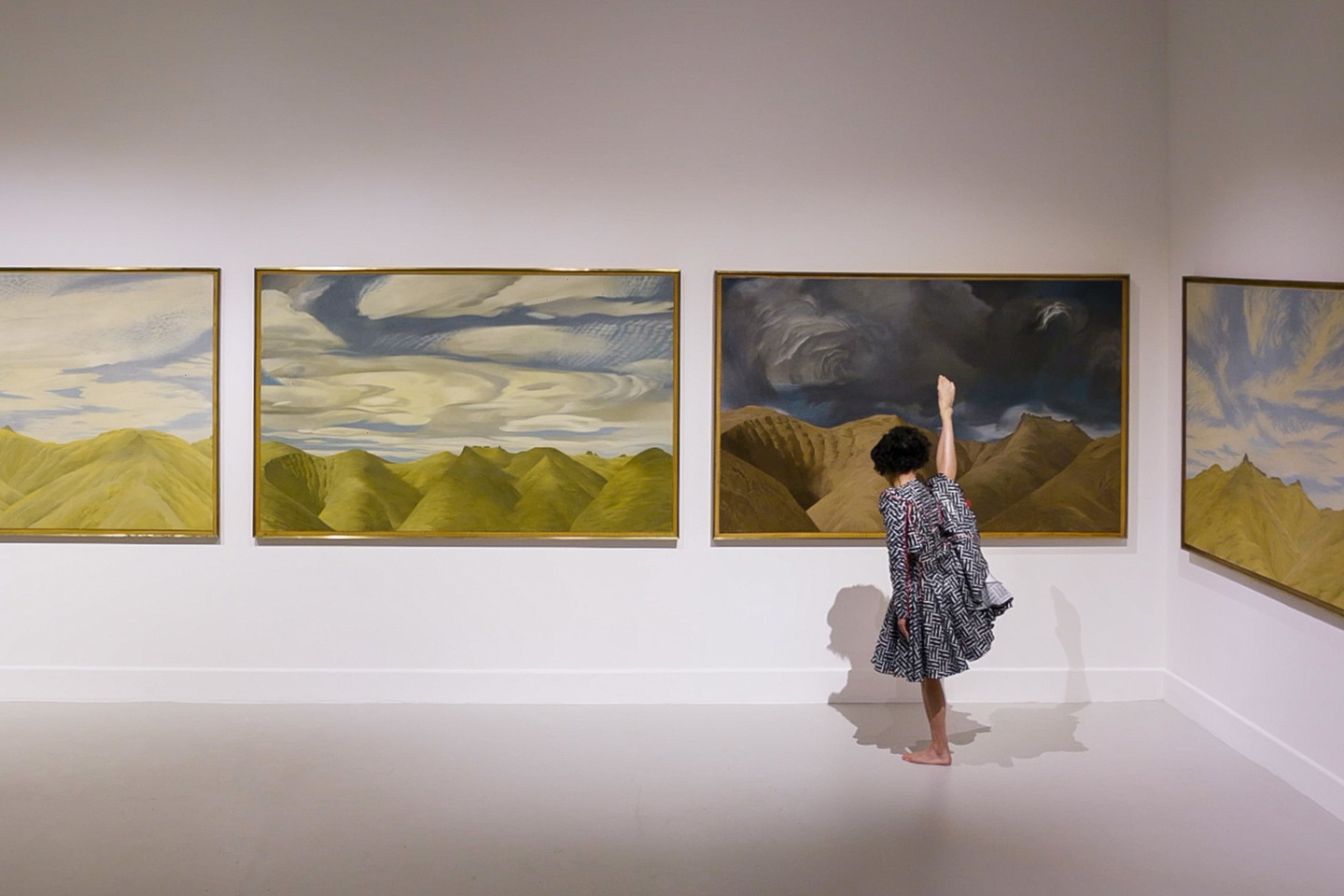Further Toward: Fayen d’Evie and Benjamin Hancock at the Govett-Brewster Art Gallery
Between August and October 2022, the Govett-Brewster presented three newly commissioned performance artworks as part of the series Public Relations. Each project interrogated how we arrive at and relate to public space, as well as the multiple and at times conflicting, histories, values and ways of knowing and navigating that make up the public sphere.
The series began in late-August with Louie Zalk-Neale’s work Ngā Manuhiri Taura (supported by Rangimarie Keall) which took place at Ōnukutaipari/Back Beach.
A month later in September, artists Chris Braddock and Layne Waerea led two excursions to sites in central Ngāmotu for their work Free Public Sauna: Sweaty conversations in Ngāmotu.
Public Relations concluded on 19 October with the premier of a new work by Naarm/Melbourne-based artists Fayen d’Evie and Benjamin Hancock, titled {~~~~} Further Toward, Further Toward A Deconstruction of Phallic Univocality: Deferrals.
We’re delighted to share video documentation of d’Evie and Hancock’s artwork.

Fayen d’Evie and Benjamin Hancock, {~~~~} Further Toward, Further Toward A Deconstruction of Phallic Univocality: Deferrals, documentation of performance, Govett-Brewster Art Gallery, Ngāmotu New Plymouth, 19 October 2022. Photo: Ted Whitaker. Courtesy of the artists. Background works: W. A. Sutton, Te Tihi o Kahukura and sky, IV, V, VIII, and X, 1977.
Belonging to the artists’ ongoing series Essays in Vibrational Poetics, this performance takes as its point of departure a 1986 essay by Aotearoa-born art critic Lita Barrie.
In her text, titled Further Toward: A Deconstruction of Phallic Univocality: Deferrals, Barrie draws upon writers including Simone de Beauvoir and Luce Irigaray to stage a critique of a group of New Zealand women artists whose work Barrie considered one-dimensional visual slogans, lacking nuance or depth. Published in the context of passionate debates around feminist politics and practice in Aotearoa, Barrie’s polemic caused controversy upon its initial release.
D’Evie and Hancock selected quotes from Barrie’s text, which have been translated into a series of movements performed by Hanock, gestures and articulations the artists call an “embodied typography.” In doing so, the artists gently critique Barrie’s position, and rethink how we might engage with publishing through the body and the voice.
The first quote is the essay’s title; the second is Barrie’s own quotation of Simone de Beauvoir’s statement, “one is not born a woman, but rather becomes a woman;” the third is “What is woman?... a DISRUPTIVE EXCESS is possible on the feminine side.”
In each instance, the artists pay attention to the contexts, poetics and typographic treatment of language, as well as incorporating graphic elements from the text into Hancock’s costume—a pattern from the title page of the essay finds itself repeated on Hancock’s dress. In doing so, they consider how gendered expression, much like written communication, involves patterns of repetition, citation and translation, and how the meanings of both writing and gender changes over time.
Time: 27:01
Documentation of Fayen d’Evie and Benjamin Hancock's work in Public Relations: A Performance Series, titled {~~~~} Further Toward, Further Toward A Deconstruction of Phallic Univocality: Deferrals 2022, performed at the Govett-Brewster Art Gallery | Len Lye Centre in October 2022. Note: video has no sound.
Video credits:
Videography: Ted Whitaker
Editing: Benjamin Hancock
Garment: Tristan Seebohm
Nails: Lili Taylor
Wig: Erika Flash
Featured artworks (in order of appearance):
Maria Olsen, Cauldron in landscape, 1987, courtesy of the Maria Olsen estate.
Rozana Lee, Birds from another continent, 2021, courtesy of the artist.
Rozana Lee, Waves of migration, 2020, courtesy of the artist.
W.A. Sutton, Te Tihi o Kahukura and Sky I, II, III, IV, V, VIII, and X 1976-7, courtesy of the W.A. Sutton Trust.
Len Lye, Sky Snakes, 2020, courtesy of the Len Lye Foundation.